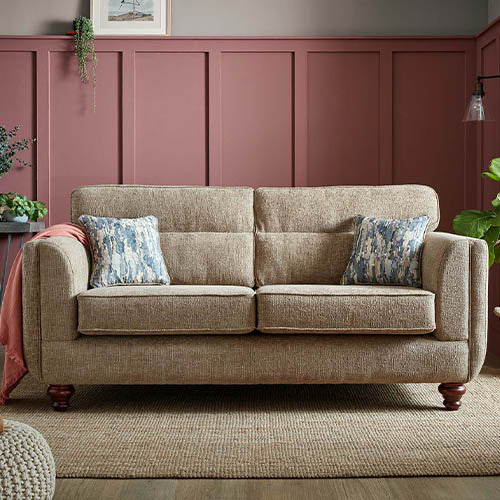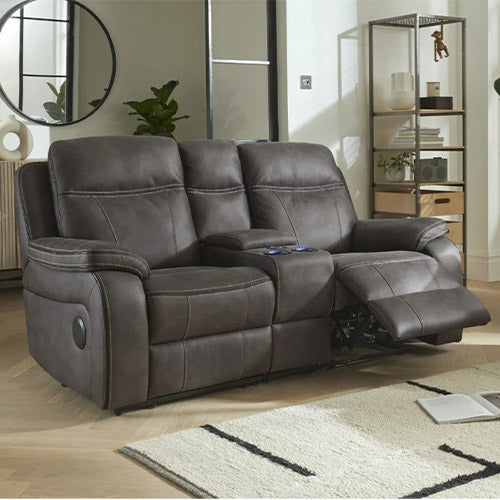Creating a Multi-functional Living Room: Work, Play, and Relax in One Space
In today's rapidly evolving world, the way we utilize our living spaces is transforming just as quickly. Gone are the days when the living room was solely a space to relax with family or entertain guests. Modern lifestyles, driven by factors like urban living, technological advancements, and the rise of remote work, demand that our homes, and particularly our living rooms, adapt and serve multiple functions. As the boundaries between work and home blur, it's imperative that our living spaces seamlessly cater to various needs without compromising on comfort or aesthetics. So, how can we design a living room that allows us to work efficiently, entertain joyfully, and relax deeply, all in one harmonized space? Dive in as we explore the art of crafting a truly multi-functional living room.

The Rise of Work-from-Home Culture
The 21st century has seen a gradual shift towards flexible work arrangements, but recent events, notably the global pandemic, accelerated this transformation at an unprecedented rate. Companies and individuals alike recognized the viability—and sometimes the necessity—of remote work. As a result, our homes, which were once reserved for relaxation and family time, have had to double as office spaces.
The living room, traditionally a hub of home activity, has often been the first choice for many when setting up a home office. Its spaciousness and central location make it a practical choice, but integrating work into this space also poses challenges. How do you conduct a video conference call amidst children's toys, or find the focus amidst the daily bustle of family life?
Yet, for many, especially those living in smaller apartments or shared housing, the living room's adaptability cannot be overlooked. The trick lies in designing it to fluidly shift between its various roles, ensuring that work doesn't overshadow leisure, and vice versa. As we delve deeper into creating a multi-functional space, we'll discover ways to maintain the living room's essence while accommodating the demands of our professional lives.

Designing a Productive Work Zone
The challenge of integrating a workspace into your living room lies in balancing functionality with aesthetics. You don’t want your work to dominate the room, but you also need an efficient area conducive to productivity. Here's how to strike that balance:
1. Choose Your Spot Wisely:
Start by identifying a corner or section of your living room that receives ample natural light and is somewhat secluded to minimize distractions. Being near a window can boost mood and focus, but ensure your computer screen doesn’t face it directly to avoid glare.
2. Multi-purpose Furniture:
Invest in furniture that serves multiple roles. A foldable desk, for instance, can be expanded during work hours and tucked away post-work, freeing up space. Chairs with storage compartments or ottomans that double up as seating and storage are excellent choices.
3. Lighting is Key:
While natural light is ideal during the day, you'll also need effective artificial lighting for evenings or cloudy days. Opt for adjustable desk lamps that focus light where you need it. Additionally, warm white bulbs can create a cozy atmosphere that's easy on the eyes.
4. Keep it Organized:
When your living room doubles as your office, clutter can accumulate quickly. Use organizers, trays, or stylish storage boxes to keep work-related items in order. At the end of the workday, make it a habit to store away laptops, cords, and other work essentials to reclaim the room for relaxation.
5. Personalize Your Workspace:
Just because it’s in the living room doesn’t mean your workspace should be devoid of personality. Add a potted plant, inspirational quotes, or a vision board. These personal touches can motivate you and delineate your workspace from the rest of the room.
6. Incorporate Acoustic Solutions:
If your living area tends to be noisy, consider investing in soft furnishings like rugs, cushions, or even decorative acoustic panels. These can absorb sound, ensuring that your video calls remain professional and free from background noise.
Remember, the goal isn't just to create a workspace, but to integrate it seamlessly. With some creativity and planning, your living room can efficiently support your professional tasks without sacrificing its primary role as a space for relaxation and entertainment.

Play Zone: Entertainment and Leisure
While work is a necessity, leisure is the essence of life. Your living room, amidst its multifaceted roles, must remain a haven for entertainment, relaxation, and bonding. Here’s how to curate a dedicated 'play zone' that coexists harmoniously with other functions:
1. Centralized Entertainment System:
Whether you're a movie buff, a gaming enthusiast, or someone who loves binge-watching TV shows, a centralized entertainment hub is crucial. Wall-mounted TVs can save space, and by placing gaming consoles, Blu-ray players, and other devices in a sleek console or cabinet beneath, you keep things tidy and organized.
2. Modular Seating:
Think about seating that can be easily moved or rearranged. Bean bags, floor cushions, or lightweight stools can be versatile choices. This allows for quick shifts between a movie night, a board game evening, or casual lounging.
3. Multi-functional Coffee Tables:
A coffee table with storage can house board games, remote controls, or even a collection of magazines and books. Some tables come with lift tops that can be used as impromptu dining or gaming areas.
4. Sound Systems:
For those invested in quality sound, consider wireless or wall-mounted speakers to keep floorspace clear. Soundbars are a popular choice as they offer impressive audio without the clutter of a traditional surround sound setup.
5. Kids’ Corner:
If you have children, designate a small section for their toys and activities. Use attractive storage bins or ottomans to store toys, ensuring that they can be easily accessed by little hands but also quickly stashed away when needed.
6. Art & Decoration:
This is your leisure space, so make it vibrant and representative of your tastes. Hang artwork, posters of your favorite movies, or any decor that brings joy and fosters a sense of relaxation.
The essence of the play zone lies in its adaptability. While it should be equipped for fun and entertainment, it should also allow for easy transitions, ensuring the living room remains open, spacious, and inviting for all activities.

Relax and Recharge: Creating a Cozy Retreat
Amidst the hustle and bustle of daily life and the multipurpose demands of our living spaces, it's essential to have a designated area where you can truly unwind. The living room, despite its many functions, should also provide a sanctuary for relaxation and self-renewal. Here's how you can curate that tranquil space:
1. Comfortable Seating:
Consider adding a plush armchair, a chaise lounge, or even a hammock swing if space allows. This can serve as your dedicated "relaxation seat" where you can curl up with a book, meditate, or simply daydream.
2. Soft Furnishings:
Layer soft textiles around the room. Think of throw pillows in calming colors, tactile blankets, and thick, soft rugs underfoot. These elements add to the sensory experience and enhance comfort.
3. Nature's Touch:
Incorporate elements of nature. Houseplants can purify the air and instill a sense of calm. A small tabletop water fountain can also be soothing, with its gentle trickle mimicking nature's symphony.
4. Aroma and Ambiance:
Scent plays a pivotal role in relaxation. Consider aromatherapy diffusers with essential oils like lavender or chamomile. If you prefer candles, choose those with calming scents and let the soft glow add warmth to your space.
5. Minimalism:
While it's okay to have a few decorative items, strive for minimal clutter. A decluttered space often translates to a decluttered mind, making relaxation easier and more profound.
6. Reading Nook:
If you're a bibliophile, dedicate a corner of your living room as a reading nook. A comfy chair, a side table for your coffee or tea, and a good reading lamp can create the perfect environment to dive into a book.
In a world where the pace seldom slows, having a corner of your home dedicated to peace and rejuvenation isn't just a luxury—it's a necessity. By integrating these elements, your living room can transition from work to play, and finally, to a serene retreat, effortlessly.

Conclusion
The modern living room has evolved beyond a singular purpose, reflecting the multifaceted lives we lead today. It's no longer just a space to entertain or watch TV; it's a workplace, a play zone, and most importantly, a sanctuary. As the lines between work, leisure, and relaxation become increasingly blurred, our living spaces must rise to the challenge, offering versatility without compromising on comfort or style.
In curating a multi-functional living room, the key lies in intentional design and thoughtful organization. By delineating spaces for specific activities, investing in multi-purpose furniture, and incorporating elements that cater to our emotional well-being, we can create a room that truly serves our diverse needs. And in doing so, our living rooms become a testament to modern living — dynamic, adaptable, and ever-evolving.
As you embark on your journey to reshape your living space, remember to infuse it with personal touches that resonate with your unique lifestyle and preferences. After all, your home should be a reflection of you, offering both functionality and a comforting embrace at the end of a long day.
I hope this wraps up your blog post nicely! If you need further edits or additions, let me know.



